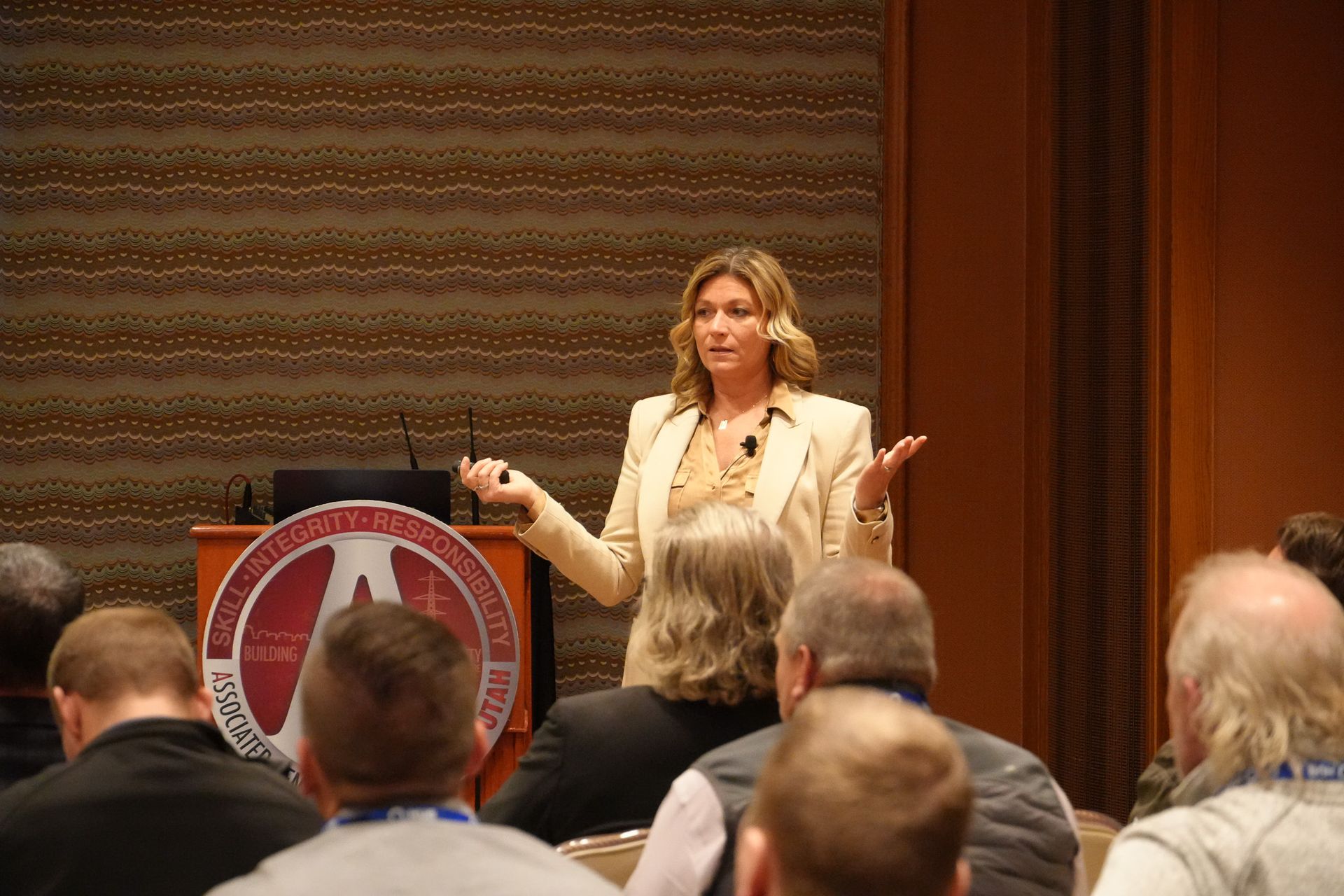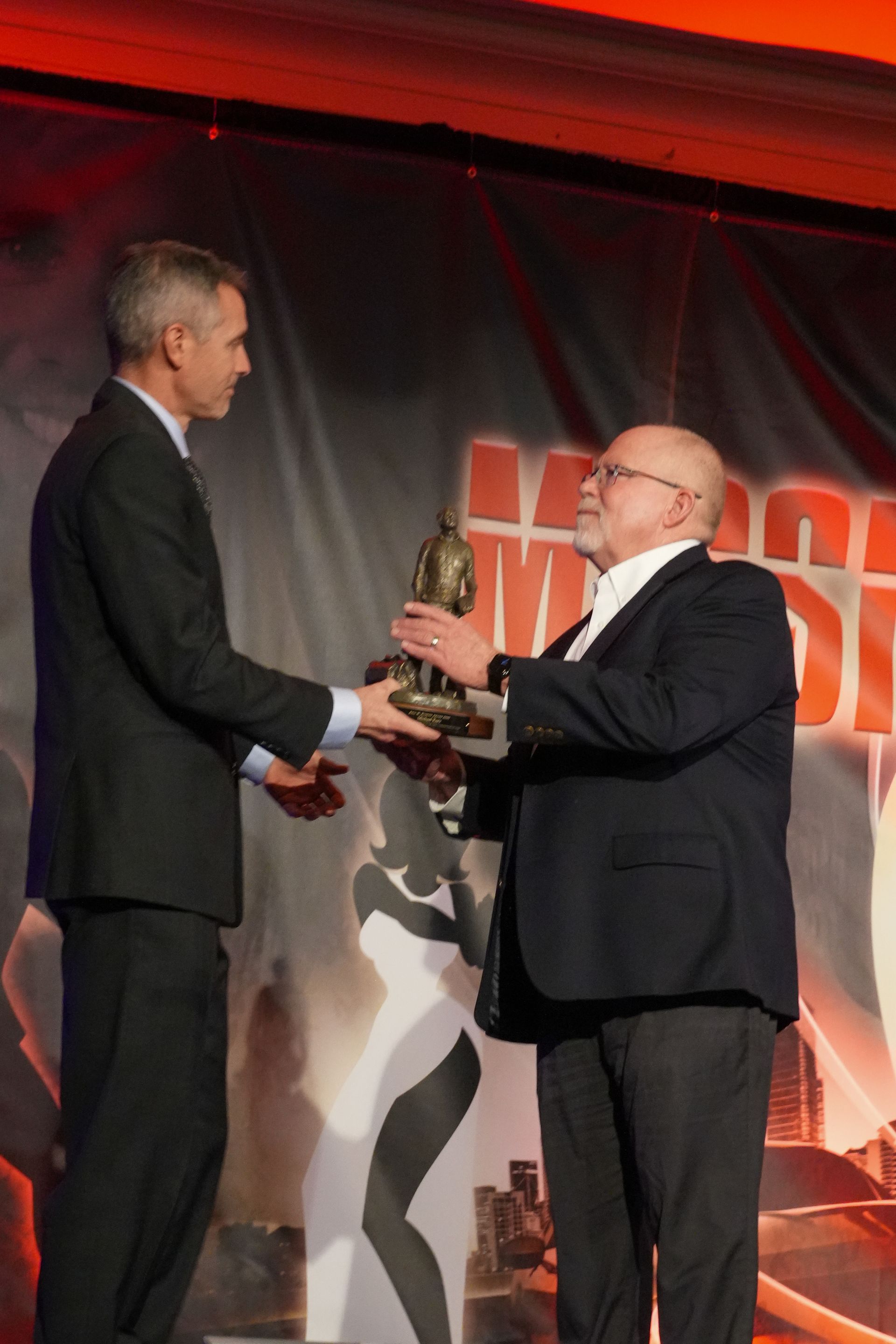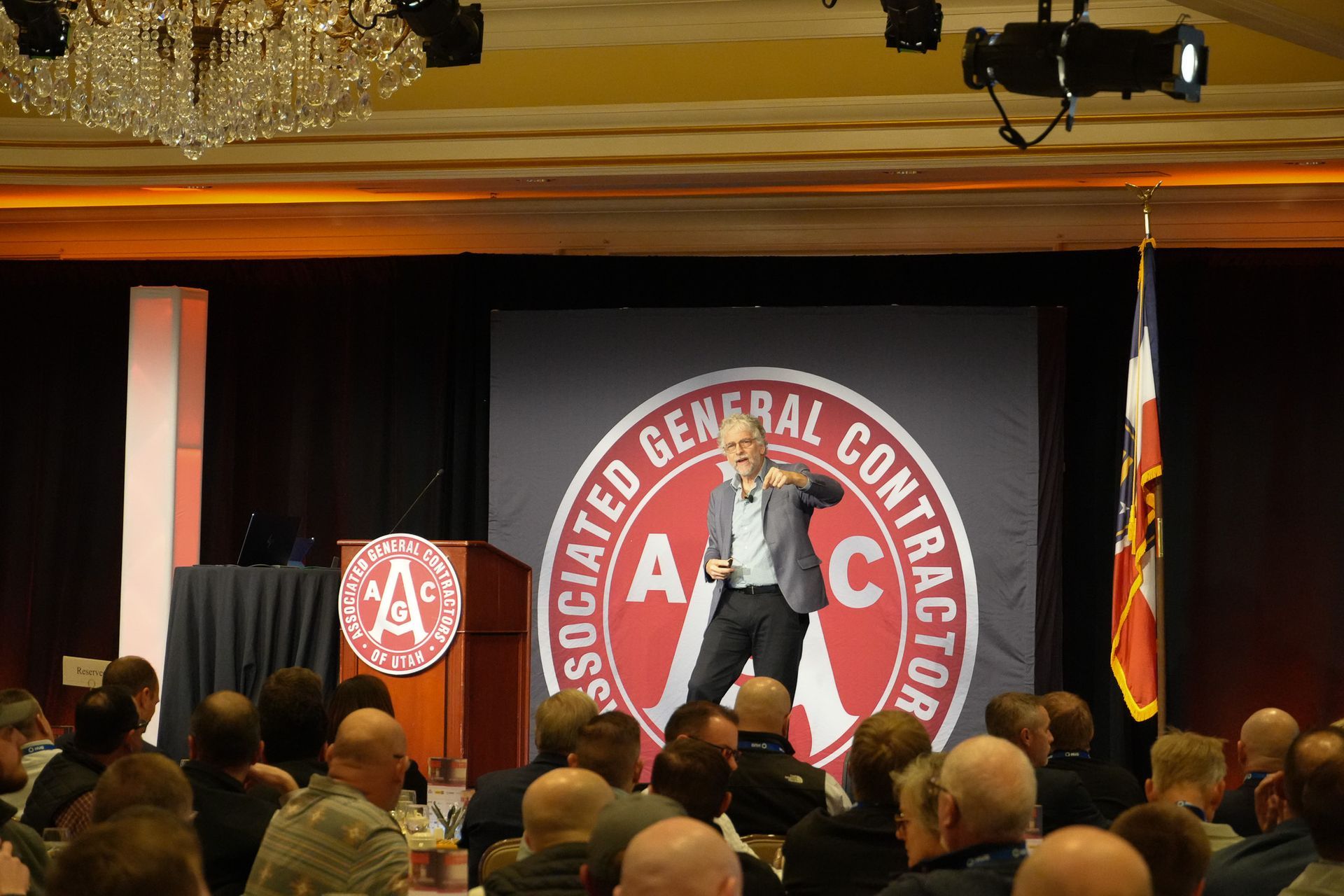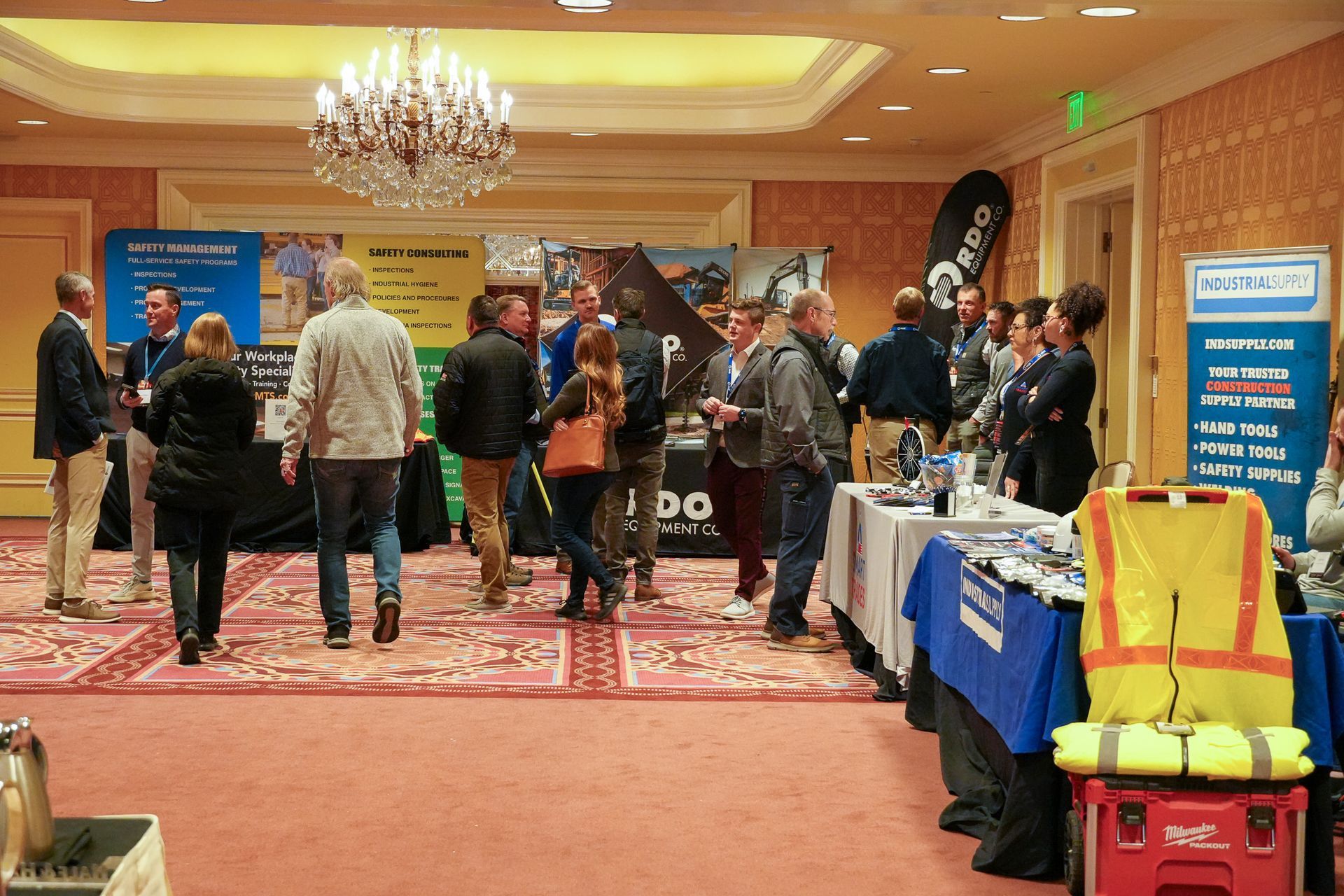Whitaker Construction President Brett Nielsen Takes Over as AGC of Utah Chairman;, is in line to become the first Utahn to serve as AGC of America Chair in 2030; former Chair Mike Kurz of Staker Parson presented with Ryberg Award.
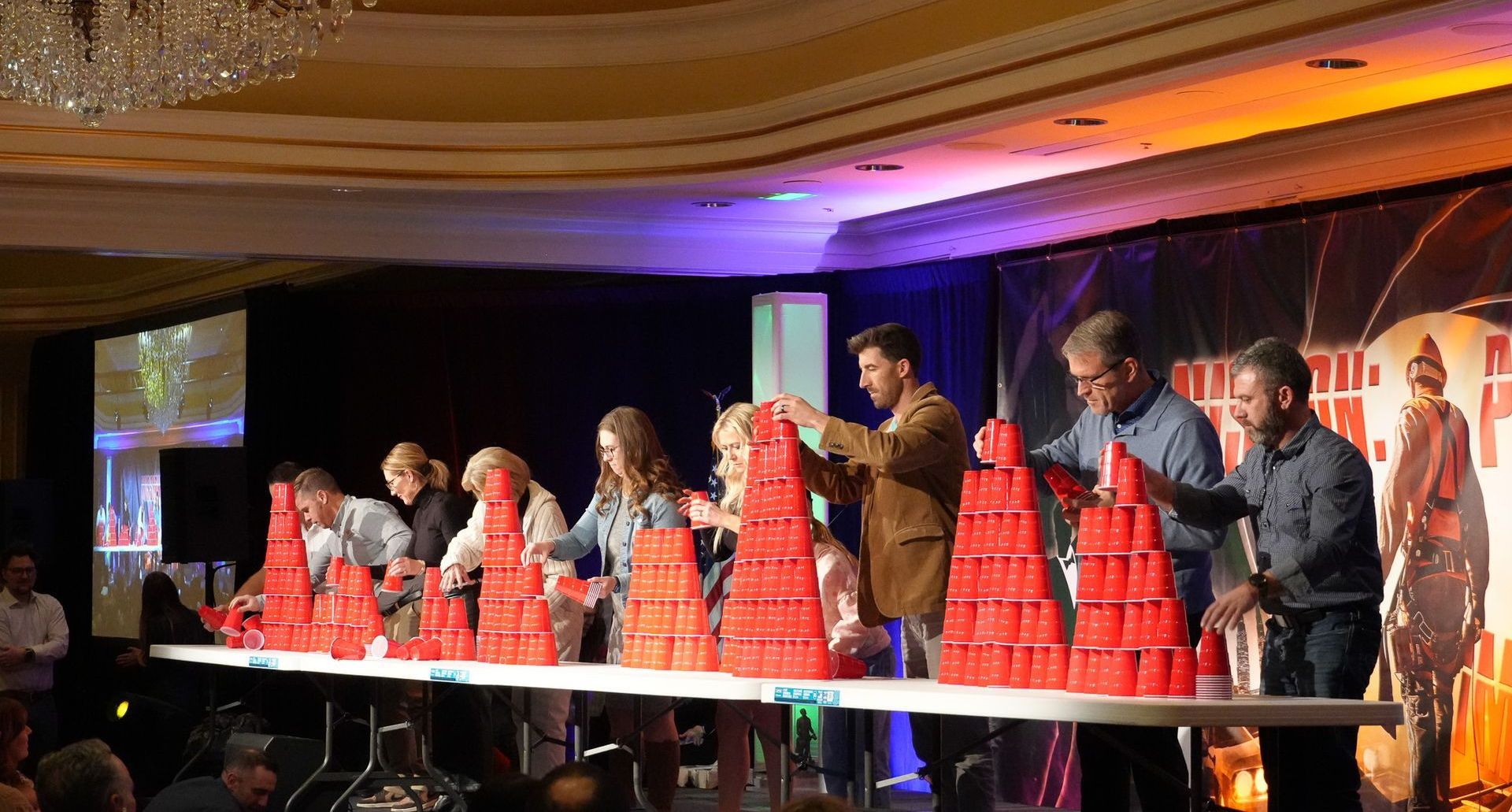
Kurz Earns Ryberg Award
Michael Kurz, former President of Utah/Arizona for Ogden-based Staker Parson Companies and 2017 AGC of Utah Chairman, was presented with the Eric C. Ryberg Award for his lifetime contributions to the industry.
"We deal with problems every single day and with every problem comes an opportunity," said Kurz in his video tribute highlighting his 40-plus-year career. "Those challenges are really what identify us and move us forward. The exciting thing about the construction industry is it becomes very inclusive; we're open to listening to people. We never know when the next great idea is coming from and those are just wonderful things for the development of people."
Kurz said he entered the construction industry by chance via a friend, starting out with Staker Paving in the early 1980s as a laborer. Having grown up on a farm, he learned the value of hard work from his parents, which set the tone for his career.
"There was nothing given to us, ever," said Kurz, who said he entertained several career options before realizing he simply loved working in construction, remarking that the industry allows a person to see what they've accomplished every day.
He praised his family for their support and patience as he worked long hours, often times out of town on remote jobs. He gradually progressed within the company, saying that progress often comes via learning from the mistakes you make along the way. He's impressed with how much the industry has grown in recent years via technology, including the automation of various processes and procedures, and said he worked on more projects than he can count, including the Utah State Capitol Restoration, the Salt Lake Temple Restoration, and the West Davis Corridor highway project.
"When I think about the contracting community, it is a really, almost a family feeling, as we've all grown together and worked together," said Kurz. "I've seen so much growth over the years, it's just been a fabulous journey for me."
"I'm thrilled that Mike has been recognized with the prestigious Eric C. Ryberg Award from AGC of Utah," said Scott Parson, President, CRH Americas Materials and 2023 AGC of Utah Chair. "Mike represents the very best of the construction industry and embodies AGC's values of skill, integrity and responsibility. While Mike has helped build a legacy of projects across Utah that benefit Utahns every single day, his most enduring and impactful legacy is his family both at home and across Staker Parson Materials & Construction. We are knitted together as a "family of families" because of Mike's stellar leadership."
Building CLC a Top
Priority in 2025
Nielsen has made it no secret that strengthening the Construction Leadership Committee is at the top of his agenda. In 2022, AGC of Utah joined nearly half of the 88 AGC of America chapters in forming local CLC chapters. The CLC was established to fulfill the need to cultivate the next generation of leaders in the construction industry as well as introducing these future leaders to AGC both at the chapter and national levels. CLC creates a conduit for participants to network, exchange ideas about their careers, the industry, serve local communities, and continue their education for both their professional development and leadership skills.
"I am passionate about growing the leadership and talent of our industry, and I will be working with our chapter’s President/CEO Joey Gilbert and Director of Communications and Member Engagement Parker Davis to advance our chapter’s CLC activation," he added. Sage Thorpe of Whitaker Construction was named Chairman of AGC of Utah’s CLC and will begin holding committee meetings in March.
2025 Convention Shows
Appetite to Meet and
Network Remains Strong
AGC executive staff made a conscious decision five years ago to streamline the annual convention, which has been well-received by member firms. Each of the main events were packed, a testament to a strong overall program (with tons of top shelf raffle prizes), and the industry's desire to get together, mingle, and talk shop.
"The changes that have been made the past few years have been exciting, with the energy of the convention being off the charts," said Joey Gilbert, AGC of Utah President/CEO. "We had an incredible turnout, with members from all sectors of the industry coming together to share ideas, discuss challenges, and celebrate successes."
Gilbert continued: "The variety of sessions this year was a game-changer, offering fresh, actionable insights on everything from cutting-edge technology such as AI to company emergency preparedness. What really stood out was the sense of unity—there's a genuine excitement about the direction our industry is headed, and AGC is eager to be part of shaping it."
AGC Awards Breakfast
Recognizes Projects, People
The AGC of Utah convention kicked off January 23 with a prestigious awards breakfast honoring the recipients of the chapter's Annual Awards. This year, 39 awards were presented, recognizing excellence across various project categories and individual contributions to the industry.
Major project awards included: Building Project of the Year to Salt Lake-based Jacobsen Construction for the Primary Children's Hospital Larry H. & Gail Miller Family Campus in Lehi; Transportation/Utility Infrastructure Project of the Year to Lehi-based Gerber Construction for the CWP—North Shore Terminal Reservoir Phase II.
Firm honors were given to Salt Lake-based MHTN Architects as Outstanding Architect of the Year; Midvale-based Michael Baker International earned Consultant/Engineering Firm of the Year; Metropolitan Water District of Salt Lake & Sandy was tabbed as Owner of the Year.
Day two of the convention (January 24) was packed with insightful sessions and opportunities for professional growth. A Service/Supplier Expo showcasing new industry products and innovations was followed by a Kick-Off Breakfast featuring keynote speaker James Spellos, a recognized expert in artificial intelligence (AI) and technology trends.
Attendees then had the opportunity to participate in multiple breakout sessions, covering topics such as: AI's Top 40–Navigating the New Wave Of Business Tools (James Spellos); Achievement Now–Elevate Your Success! (Tyler Enslin); Adapt Your Leadership to Changing Environments (Spencer Horn); Mental Health Crisis in Construction (James P. Smith of BYU's Civil and Construction Engineering department); The Brand Blueprint: Crafting a Cohesive Identity (Julie Warnick); Emergency Preparedness (Be Ready Utah).
The AGC Membership Luncheon featured an engaging presentation by Tyler Enslin on Mastering Your Memory, equipping attendees with practical techniques to enhance focus, recall names, and improve professional performance.
The convention's closing Installation Banquet, with the theme Mission: ImPossible, celebrated AGC of Utah's 103-year legacy with an exciting night of networking, recognition, and a shared vision for the future, with Opheikens passing the "AGC Hammer" to Nielsen, marking the beginning of his term as Chairman of the Board.
As the association looks forward to another year of progress and innovation, the insights and connections gained at this year's convention will help contribute to the continued success of Utah's construction sector.


















